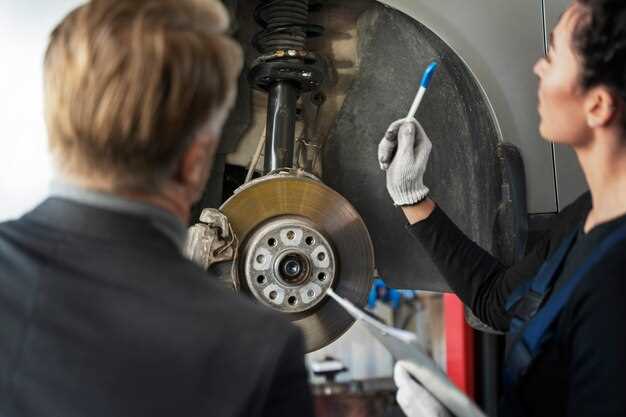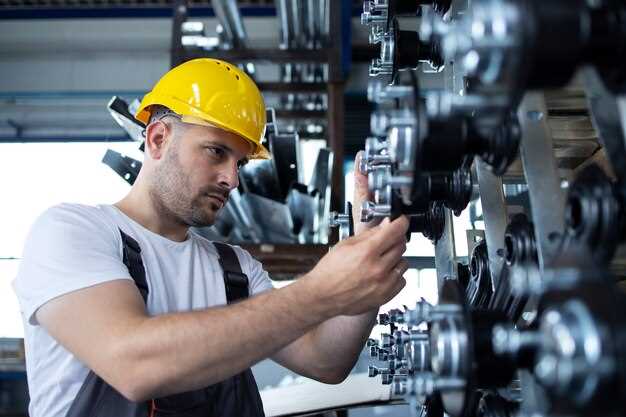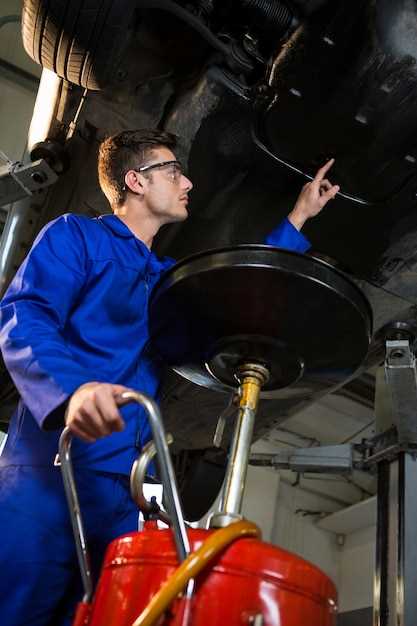
Custom exhaust systems are a popular modification among automotive enthusiasts seeking to enhance both the performance and sound of their vehicles. The installation of these systems is often viewed as a way to express individuality while improving engine efficiency. However, expectations must be managed to ensure satisfaction with the results.
When considering a custom exhaust system, one of the primary factors to evaluate is the sound. Each system produces a unique tone that can range from deep and aggressive to smooth and subtle. Understanding the characteristics of various options available on the market is essential to achieve the desired auditory effect.
In addition to sound, performance gains should also be at the forefront of your expectations. A well-designed custom exhaust system not only enhances your vehicle’s acoustic profile but can also lead to improved horsepower and torque. Knowing how these aspects interplay will help you make an informed decision, turning your expectations into reality.
Guide to Installing Custom Exhaust Systems

Installing a custom exhaust system is an effective way to enhance your vehicle’s performance and sound. Before beginning the installation process, it’s essential to gather all necessary tools and parts. Ensure you have a reliable lift or jack stands, wrenches, clamps, and a cutting tool for precise adjustments. Depending on the complexity of the system, you may also require specialized tools.
Start by removing the factory exhaust system. Carefully detach all hangers and bolts, taking care not to damage surrounding components. Once the factory system is removed, inspect the exhaust hangers and replace any that are worn or damaged. This will ensure that your custom system fits securely and operates effectively.
Next, plan the layout of your custom exhaust system. Custom kits often allow for modifications, so take your time to align the pipes correctly. The configuration will directly impact both performance and sound. For enthusiasts seeking a louder and sportier sound, consider choosing larger diameter pipes and a less restrictive muffler.
Once the layout is finalized, proceed to cut and fit the pipes according to your design. Ensure that all components fit snugly together and make adjustments as necessary. Welding may be required for permanent connections, so choose a method that provides a reliable seal. If you’re not confident in your welding skills, consider consulting a professional.
After assembling the system, it’s crucial to test for leaks. Start the engine and listen for any unusual sounds indicating gaps or holes. Addressing leaks promptly will prevent performance issues and unwanted noise. Additionally, pay attention to how the sound resonates within the vehicle, as this can greatly affect your overall driving experience.
Finally, once satisfied with the fit and sound, secure all clamps and bolts. Routine maintenance will help keep the system in optimal condition, so check for any signs of wear or corrosion periodically. A well-installed custom exhaust system not only enhances the vehicle’s aesthetics but also contributes to improved engine performance and a distinct sound that reflects your personal style.
Understanding the Sound Profile of Different Exhaust Types
When it comes to aftermarket exhaust systems, sound is one of the most noticeable changes owners experience. Different types of exhausts produce varying sound profiles, influencing not only the auditory experience but also the overall performance of the vehicle.
Factory exhaust systems are designed for a balance between performance and noise control. They typically produce a subdued sound, focusing on compliance with regulations and comfort. In contrast, performance exhaust systems often feature wider pipes and less restriction, resulting in a deeper, more aggressive sound that many enthusiasts seek.
One popular option is the cat-back exhaust system. This type replaces everything from the catalytic converter back, enhancing both sound and flow. Cat-back systems often give a robust, throaty growl that can resonate through the cabin at higher RPMs, providing an exhilarating driving experience.
Another option is the axle-back exhaust, which replaces only the muffler section of the system. This modification typically results in a more refined sound, often characterized by a sportier tone without being overly loud. It’s a great choice for those seeking a subtle enhancement in sound without sacrificing daily drivability.
Then there are straight pipe exhausts, which eliminate any restrictions entirely. These systems produce a loud, raw sound profile that is unmistakable. However, while straight pipes can deliver thrilling auditory feedback, they may lead to drone at cruising speeds and can attract unwanted attention from law enforcement due to excessive noise levels.
Variable exhaust systems provide the best of both worlds by allowing drivers to switch between quiet and aggressive modes. These systems often incorporate valves that open or close depending on driving conditions, enabling a customizable sound experience. Such versatility makes them increasingly popular among car enthusiasts who appreciate performance without constant loudness.
Additionally, the material of the exhaust can affect sound. Stainless steel tends to produce a sharper, more aggressive note, while aluminized steel generally offers a warmer, mellower sound profile. This choice of material can significantly influence the overall exhaust experience.
Ultimately, understanding the sound profile of different exhaust systems is crucial for anyone looking to upgrade their vehicle. Whether seeking a subtle improvement or a loud soundtrack to accompany each drive, choosing the right exhaust type is vital for achieving desired performance and auditory satisfaction.
Key Tools and Materials for a Successful Installation
Installing a custom exhaust system requires specific tools and materials to ensure a successful outcome. Proper preparation will not only make the process smoother but will also contribute to the desired sound and performance of your vehicle.
- Tools:
- Socket Set: A comprehensive socket set is essential for loosening and tightening bolts throughout the installation process.
- Wrench Set: Adjustable wrenches will be helpful for stubborn bolts and tight spaces.
- Cutting Tools: A reciprocating saw or pipe cutter is necessary for modifying existing exhaust systems or fitting new components accurately.
- Torque Wrench: This tool ensures that all bolts are tightened to the manufacturer’s recommended specifications, preventing leaks or damage.
- Jack and Stands: A reliable jack and stands will elevate the vehicle safely, granting easy access to the exhaust system.
- Angle Grinder: Useful for smoothing rough edges after cutting, which helps in achieving proper fitment.
- Safety Gear: Always wear gloves, goggles, and a mask to protect against metal shards and fumes.
- Materials:
- Custom Exhaust Components: Purchase a high-quality exhaust system that matches your vehicle’s specifications and desired sound profile.
- Pipes and Hangers: Ensure you have the correct length and diameter of pipes, as well as durable hangers to secure the system in place.
- Clamps: Use stainless steel clamps to attach sections of the exhaust securely, allowing for easy future adjustments.
- High-Temperature Sealant: This will help to seal joints, preventing leaks and enhancing the exhaust’s performance.
- Insulation Material: If you desire a quieter sound, consider adding insulation material to minimize heat and noise.
By gathering these tools and materials ahead of time, you will streamline the installation process of your custom exhaust system, setting the stage for enhanced vehicle performance and sound quality.
Common Challenges During Installation and How to Overcome Them

Installing a custom exhaust system can significantly enhance your vehicle’s performance and sound. However, several challenges may arise during the installation process. Understanding these obstacles will help you prepare and find effective solutions.
One common challenge is ensuring proper fitment. Custom exhaust systems often require adjustments to align with existing mounts and connectors on your vehicle. To overcome this, always measure your components before installation. Use adjustable hangers and pipe adapters if necessary to achieve a secure fit.
Another issue can be related to welding. Many custom exhaust systems require welding to create secure connections between pipes and components. If you lack experience in welding, consider seeking professional help. Alternatively, use clamp-on solutions, which can provide a temporary or permanent fix without welding.
Sound tuning is also a critical aspect of custom exhaust installation. Achieving the desired sound can be challenging, as different materials and designs affect the exhaust’s tone. To address this, listen to audio samples or consult with experts before installation. Additionally, using resonators or mufflers can help refine the sound to suit your preferences.
Lastly, accessibility to the exhaust system can be a challenge, especially in cramped spaces. If you’re working under a vehicle, make sure to have appropriate tools and equipment such as jack stands or ramps. If accessibility is an ongoing issue, consider enlisting help from a friend or a professional to navigate tight spaces effectively.

